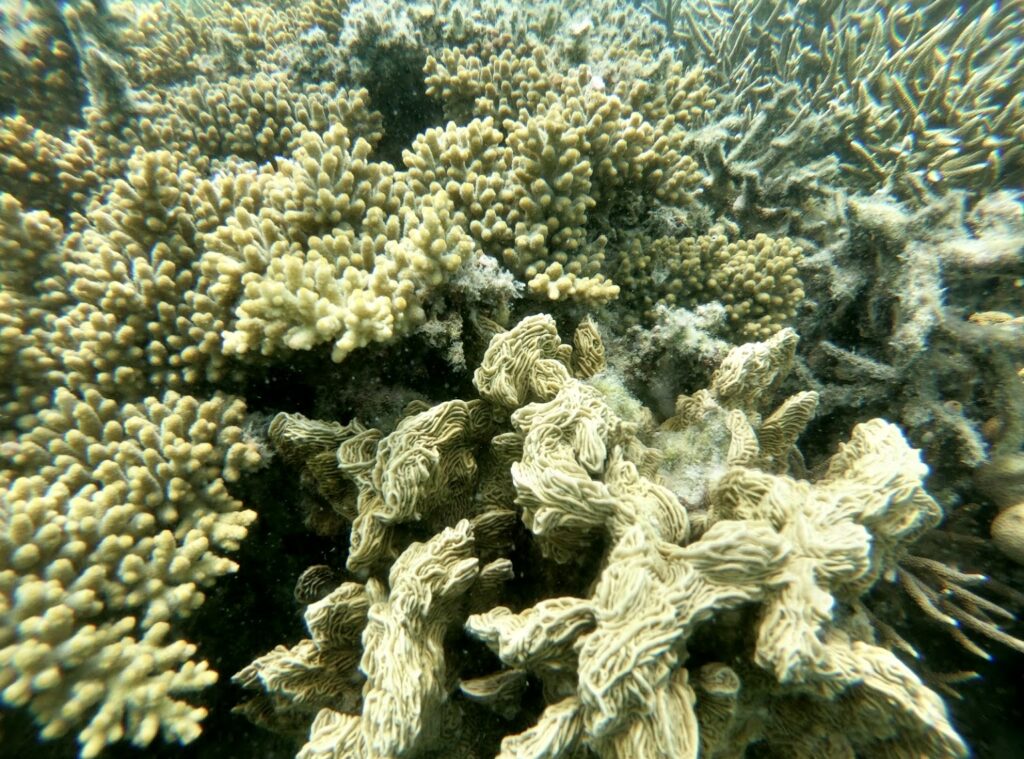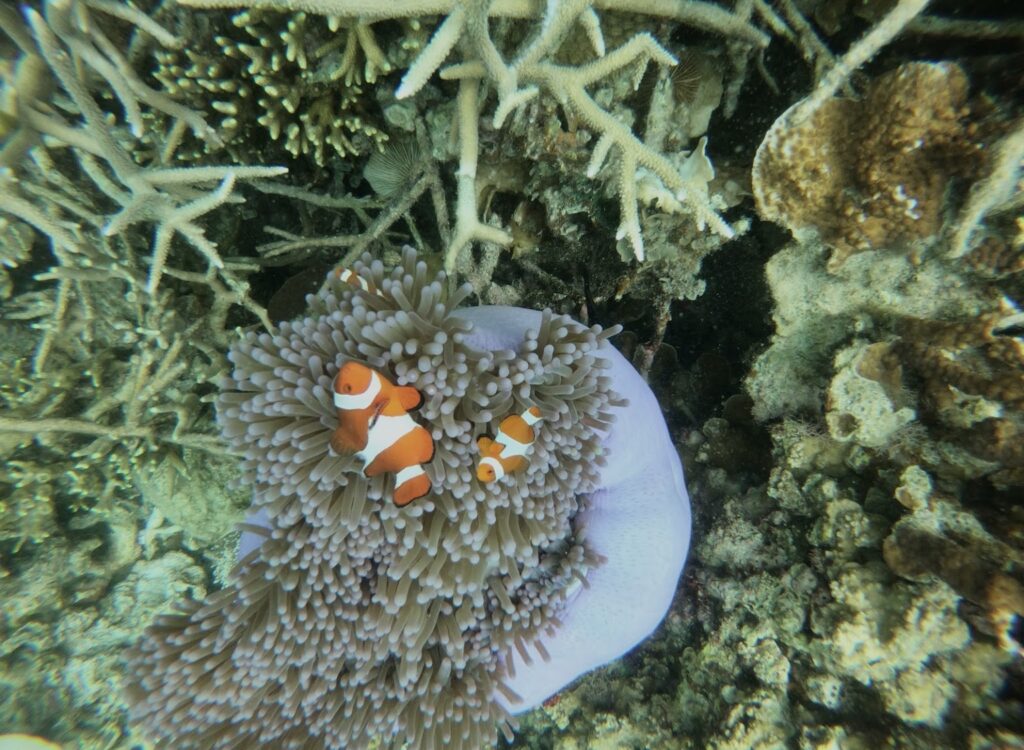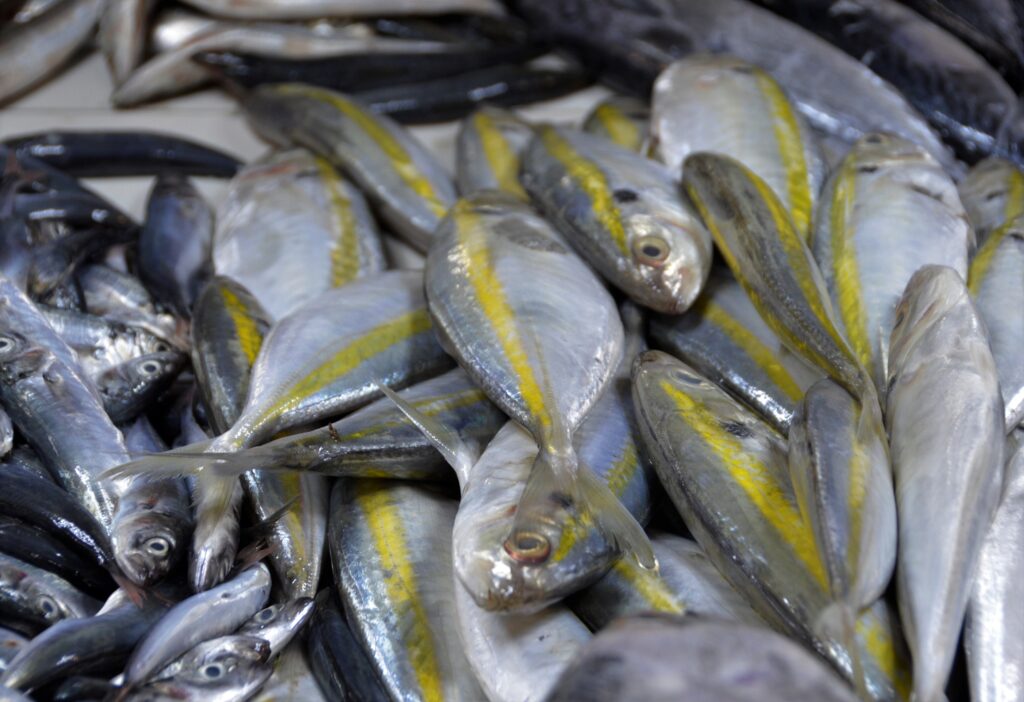WHERE HAVE ALL OUR CORAL REEFS GONE?
Text by Henrylito D. Tacio
Photos by Gregory C. Ira
Findings from a recent survey of coral reefs in the Philippines reveal that their destruction continues, despite some conservation gains in the parts of the coast. But these positive examples do give real grounds for hope, say local experts.
In the late 1970s, a study conducted by the East-West Center in Hawaii showed that more than half of the coral reefs in the country were “in advanced states of destruction.” Only about 25% of live coral reef cover were in “good condition,” while only 5% were in “excellent condition.”
Reefs are considered in “excellent condition” if live hard and soft coral cover over 75% of the area. It is considered “fair” if the cover is from 25% to 50% and “poor” if cover is 0% to 25%.

In 2014, a nationwide assessment was initiated to update the information status of the country’s coral reefs by the biology department of the De La Salle University. The 93-million study was funded by the Philippine Council for Agriculture, Aquatic and Natural Resources Research and Development (PCAARRD) of the Department of Science and Technology (DOST).
Dr. Wilfredo Y. Licuanan, leader of the study, and his team surveyed randomly selected 206 reef stations from 2014 to 2017 and another 101 stations were monitored from 2015 to 2018.
No excellent category reefs were found in the recent surveys around the country, the findings of the study showed, which was published in Marine Pollution Bulletin. But what is alarming is that about a third of the reef corals were lost over the last decade, the study found out.
“We lost roughly a third of the coral in 20 years and we lost our ‘excellent’ category corals in the last 40 years,” Dr. Licuanan was quoted as saying by Business World.
Reef Check, an international organization assessing the health of reefs in 82 countries, sounded the alarm as early as 2005. “Despite its high biodiversity, the Philippines’ reefs are very badly damaged. It’s one of the worst damaged in the world, on average,” said Dr. George Hodgson, founder of the California-based organization.

The bad condition of coral reefs is bad news for Filipino fishermen. Studies show a single reef can support as many as 3,000 species of marine life. As fishing grounds, they are thought to be 10 to 100 times as productive per unit area as the open sea.
In the Philippines, an estimated 10%-15% of the total fisheries come from coral reefs. About 80%-90% of the income of small island communities come from fisheries, according to Dr. Angel C. Alcala, former environment secretary.
In terms of productivity, good coral reef areas can produce as much as 30 tons of fishery products per square kilometer in a year, Dr. Alcala reports.
In a study done on the Sumilon Marine Park near Negros Oriental, marine biologist of Silliman University found that, with protection, the estimated fish yields were 14 to 24 tons per square kilometer annually. When protective management was withdrawn, the catch of fishermen in the area declined by as much as 55%.
Eden beneath the waves
Coral reefs, touted as “Eden beneath the waves,” are among the largest and oldest living communities of plants and animals on earth, having evolved between 200 and 450 million years ago.
“Today, most established coral reefs are between 5,000 and 10,000 years old; many of them forming thin veneers over older, much thicker reef structures,” said Don Hinrichsen, an award-winning author who has explored coral reefs around the world for his book on coastal ecosystems.
Most of the reefs are found in the tropics of Cancer and Capricorn – in the Caribbean, Indian Ocean, Red Sea, Persian Gulf, and South Pacific. They also thrive where warm currents are found off Florida, Bermuda, southern Japan and Australia. The richest reefs, however, are located in the region bounded by Indonesia, Malaysia and the Philippines.
The Philippines hold one of the most extensive coral reefs in the world with a sprawling area of 27,000 square kilometers. These contain a quarter of all the coral species known in the world, which is more than what is found in the famous Great Barrier Reef of Australia.

“The coral reefs of the Philippines have the highest number of marine fish species in the world,” said Dr. Rafael Guerrero III, a fishery expert and academician at the National Academy of Science and Technology (NAST).
Actually, there are three main types of coral reefs in the country, Dr. Alcala says. There are fringing types found on the edges of island and which constitute 30% of the coral reefs in the country); the barrier type exemplified by the Danajon Reef of Central Visayas; and the atoll of which the Tubbataha and Cagayan Reefs in the Sulu Sea are the best examples.
Usual culprit
Unfortunately, these reefs may not survive unless they receive much greater care. Dr. Robert Ginsburg, a specialist on coral reefs working with the Rosenstiel School of Marine and Atmospheric Science at the University of Miami, said human beings have a lot to do with the rapid destruction of reefs. “In areas where people are using the reefs or where there is a large population, there are significant declines in coral reefs,” he pointed out.
Dr. Edgardo Gomez, one of the country’s coral reefs experts, when he was still alive had the same opinion. “If asked what the major problem of coral reefs is, my reply would be: ‘The pressure of human population.’ A visit to any fishing village near a reef will confirm this. There are just too many fishermen,” he said.
Most of these fishermen are employing destructive fishing methods – ranging from dynamite blasts to cyanide poisons. Fishermen are still blasting reefs with dynamite, despite outlawed, to stun the fish, doing immense damage, and greatly reducing their productivity.
Heavily blasted reefs produce only 2.7 to five metric tons per square kilometer per year compared to 30 metric tons for healthy reefs, experts claim.
In many parts of the world, natural poisons have long been used in fishing without apparent damage. But such is not the case of sodium cyanide. Filipino fishermen stun fish by squirting cyanide into the reefs with crowbars to capture disoriented fish in the coral where they hide.
In addition, cyanide kills coral polyps and the symbiotic algae and other small organisms necessary for healthy reefs. An estimated 330,000 pounds of cyanide is reportedly sprayed on Philippine coral reefs each year, the Coral Reef Alliance claims.
Another equally destructive fishing method practice by Filipino fishermen is the muro-ami, which was introduced by the Okinawa fishermen before World War II. Muro-ami, a drive-in net used for fishing in coral reefs, consists of a net bag with two long wings into which the schooling fish, like the dalagang bukid, are driven by the divers.
The gear uses vertical scarelines weighed down by stones or chain links for creating a disturbance that drives out the fish from the coral reef into the net. “The problems related to muro-ami are its employment of minors (young boys) for fishing, their exposure to health hazards (like the ‘bends’ or narcosis) and the destruction of coral reefs because of the weighted scarelines,” Dr. Guerrero said.
A study conducted by marine biologists Karen Carpenter and Dr. Alcala in 1977 showed that 50 divers operating the gear could damage as much as 17 square meters per hectare of coral reef per operation. A muro-ami fishing boat usually operates three to four times in a fishing season.
Other causes
Coral mining has also depleted the country’s reefs. An estimated 1.5 million kilograms of corals are harvested annually as part of the international trade in reef products. The Philippines is estimated to supply more than a third of the total.
In recent years, the phenomenon called bleaching has also threatened the country’s sensitive coral reefs. The whitening of corals, marine experts explain, is from the loss of zooxanthellae, an organism found in the tissue of polyps (a tiny flower-like animal connected by a membrane that covers the coral rock), exposing the coral’s calcium component and usually causing death.
Also contributing to the destruction of coral reefs in the country are sedimentation from erosion of soil caused by deforestation in the uplands; the quarrying of coral reefs for construction purposes; pollution from industry, mining and municipalities; and coastal population growth.
Saving coral reefs
But there are some glimmers of hope. The Tubbataha Reef is a fine example. In the late 1980s, overfishing and destructive fishing practices were rampant, with coral cover reduced by 50% over a five-year period ending in 1989. Today, the 33,200-hectare area is a national marine park.
Both government and non-government organizations have worked together to manage the park since its establishment in 1988. Since 1989, the condition of the coral reef substrate has “improved remarkably” and the diversity of fish is “exceptionally high.”
In Camiguin Island, a reef-rescue team employed a relatively new technology that involves the process of micro-fragmentation and colony fusion of coral fragments. This differs significantly from the more common coral restoration methods that usually focus on branching species.
“In this technique, the massive corals – which normally have a slow growth rate – are fragmented or broken up using special equipment,” said Alexandra Hill, a British marine biologist who headed a study looking at reef regeneration in the island province, “and the corals exhibit a faster growth rate when fragmented.
“Furthermore,” she added, “fragments from the same donor colony have the ability to fuse together when physically joined which increases their overall surface area and their chances of survival.”
Experts urged Filipinos to help save the remaining coral reefs that the country has. “We are only stewards of our nation’s resources,” said Dr. Guerrero. “We should take care of our national heritage so that future generations can enjoy them. Let’s do our best to save our coral reefs. Our children’s children will thank us for it.”

